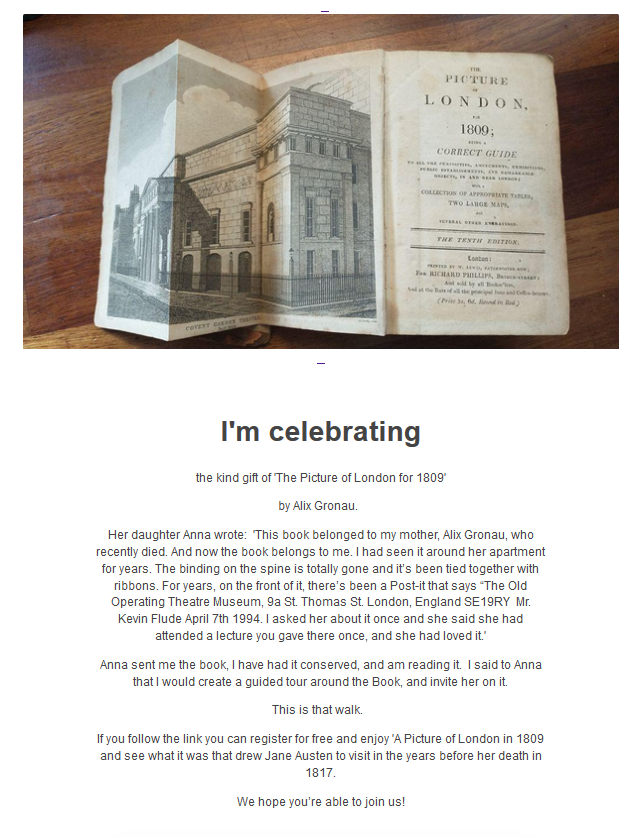Here is an introduction to the Saxon London Walk Virtual Walk, taking place this Sunday at 6.30pm. The Podcasts includes Kevin Flude reading contemporary quotations from the end of Roman London and the beginning of Saxon London
ARCHIVE OF RECENT WALKS (2019 – 21)
I do various walks from time to time, nearly all for London Walks. (A list of all the walks. lectures, study tours I have given can be found here):
JANE AUSTEN’S LONDON
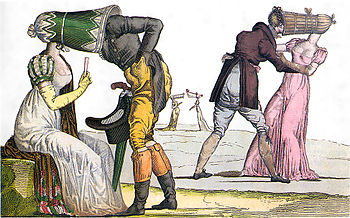
Jane Austen’s London takes place at 2.30 pm on Sunday, July 4th. The meeting point is just outside the Green Park exit (by the fountain) of Green Park Tube.
This is a London Walks Walk. To book click here:
The walk takes in the area of the London section of Sense and Sensibility. This is where Jane Austen frequented when visiting her banking brother, Henry. He lived here during his ‘successful’ period, after resigning as a Captain in the Militia and setting up a bank to help soldiers pay for their commissions. He then did what all good bankers do – went bankrupt and ruined himself, family and friends. His uncle lost 10,000 pounds; his rich brother, Edward Knight lost £20,000. (that is 2/5ths of the fortune of Willoughby’s wife, and equal to the income of Darcy, 100 times the annual income of Mrs Austen after her husband died) i.e. a heck of a lot of money. Jane lost £13.
But this area was also the centre of the Ton – the wealthy elite of Regency London. It was here that the French Royal family, in exile, hung out, and the haunt of Beau Brummel and Prinny, the Prince Regent, loungers in chief who were so well satirised in the figure of Sir Walter Elliot. This is where the Dandies lounged, leered and shopped. Here the rich could get their guns, swords, cigars, snuff, hats, shoes, tailored clothes, uniforms, wine, prostitutes, lovers. They came to visit art galleries, see panoramas of European Cities, to ‘see’ the invisible women living in her glass jar, to choose their Wedgwood pottery.
And what is astonishing is that this is still where the megarich do exactly the same things: hang out and shop. All the top brands are here, and instead of people like John Willoughy are to be found Russian Oligarchs, and the rich of the Emirates, and every other country in the world. And most marvellously many of the shops survive into the present day. The same shops and shop fronts still in use. They catered to the stupidly wealthy of the 18th Century are now catering for the stupidly wealthy of the 21st Century. This is where you can buy luxury yachts.
So we follow Jane and Henry, and see the ghost traces left by immoral Willoughby, sensible Elinor, overwrought Marianne, dull but nice Edward Ferrars, dull and horrible Robert Ferrars, stolid Colonel Brandon, vulgar but kind Mrs Jennings and her unforgivably vulgar daughter Mrs Palmer with her despairing husband; the Middletons, the Steeles gals ruthlessly working their assets. Plus we have a little look at the relationship between Prinny and Beau Brummel, and the terrible childbed of Princess Ch
THE REBIRTH OF SAXON LONDON ARCHAEOLOGY VIRTUAL WALK
Sunday 4th July 2021 6.30pm
An exploration of what happened following the Roman Period. How did a Celtic speaking Latin educated Roman City become, first deserted, then recovered to become the leading City in a germanic speaking Kingdom?
My first virtual walk took place every Sunday at 2pm in August 2020 and was:Myths, Legends and the Archaeological Origins of London in August 2020
and I have since done:
Sunday 25th October 2020 The Archaeology and Culture of Roman London Virtual Walk. For more details click here.
Sunday 1st November 2020 The Decline and Fall of Dark Age London Archaeology Virtual Walk. For more details click here.
Sunday 8th November 2020 The Rebirth of Saxon London Archaeology Virtual Walk For more details click here.
Sunday 22nd November 2020 Flower of Cities All – Medieval London History & Archaeology Virtual Walk For more details click here.
Sunday 29th November 2020. The London of Thomas More and Thomas Cromwell Virtual Walk For more details click here.
Sunday 6th December 2020 The Financial City from Slavery to Hedge Fund Virtual Walk For more details click here.
Sunday 13 th December 2020 Myths, Legends and the Origins of London Archaeology Virtual Walk . For more details of this walk click here.
Walks given recently:
Feb 22 2.30 Bermondsey – Archaeology & History. Bermondsey Tube
7.15 Southwark & Bankside Pub Tour. London Bridge Tube, Tooley St
Feb 1 2.30 Tower Hill to Rotherhithe Riverside Walk. Tower Hill Tube
Feb 2 10.45 Bishopsgate Ward Walk. Liverpool St Tube
Jan 25th 2.30 Wolf Hall London. Liverpool Street Tube
7.15 Blackfriars to Fleet St Pub Tour. Blackfriars Tube
Jan 26 2.30 Romans in London. Monument Tube
2019
Dec 21 10.30 London’s East End – The Peasants’ Revolt to Street Art. Aldgate Tube High Street Exit
2.30 Shakespeare’s London Locations – The places in the plays
Shoreditch High Street Overground Station
Jan 5 10.45 Myths & Legends & the Origins of London. Tower Hill Tube
Nov 23rd 2.30 The City and the Blitz. Moorgate West Tube. For more information
7.15 Hampstead Pub Tour Hampstead Tube For more information
Nov 30th 2.30 In Search of Saxon London. Moorgate Tube. For more information
7.15 Smithfield Pub Tour. Barbican Tube
Myths and Legends and the Origins of London on Saturday at Oct. 5 for details click here
City Backstreets Pub Tour at 7.15 Oct. 5 click here for details
The City and the Blitz on November 23
Decline and Fall of Roman London on Saturday at 2.30 Sept. 28 for details click here:
Chelsea Pub Tour Saturday at 7.15 Sept. 28 for details click here:
Jane Austen’s London 4 May 2019 7.15 Green Park Underground
For more details see blog post:
River Fleet Pub Crawl May 18
Free Metropolitan Hospital, Hackney
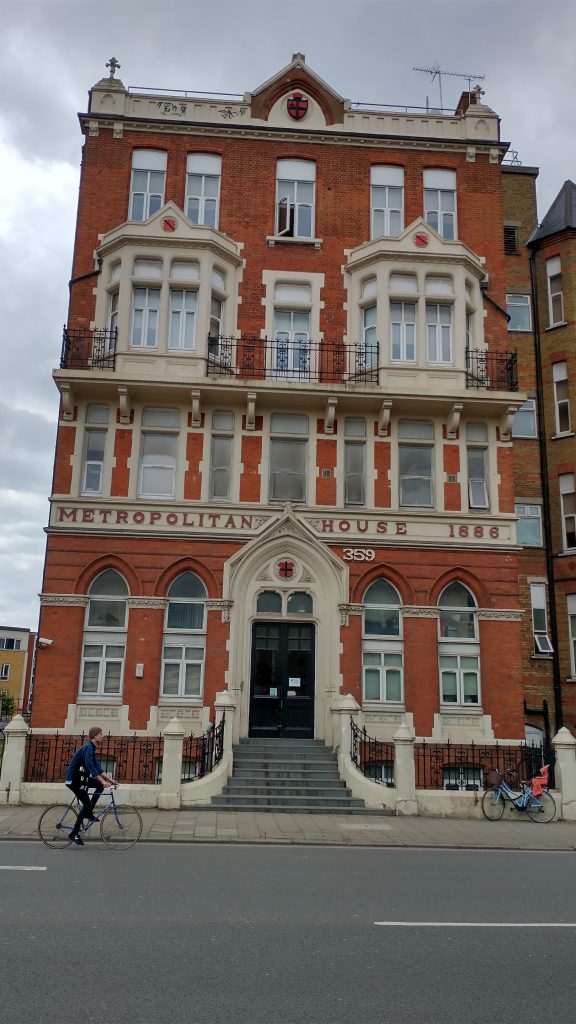
I have walked past this building many times, and only just decided to find out what it was.
It was a Free Hospital, founded by Jonathan Fry, a son of Elizabeth Fry, to provide medical treatment for the poor. It was originally founded in 1836, and had various sites – Carey Street, Bishopsgate, Spitalfields before moving to Kingsland Road Hackney, near my home.
Its mission? ‘to grant immediate relief to the sick poor of every nation and class whatever may be their diseases, on presenting themselves to the charity without letter of recommendation; such letters being always procured with difficulty and often after dangerous delay’.
It became part of the NHS when it was established after WW2 and then closed in 1977.
Restarting Real, Physical Guided Walks
on 27th May 2021! T 6.30PM, Bank Tube
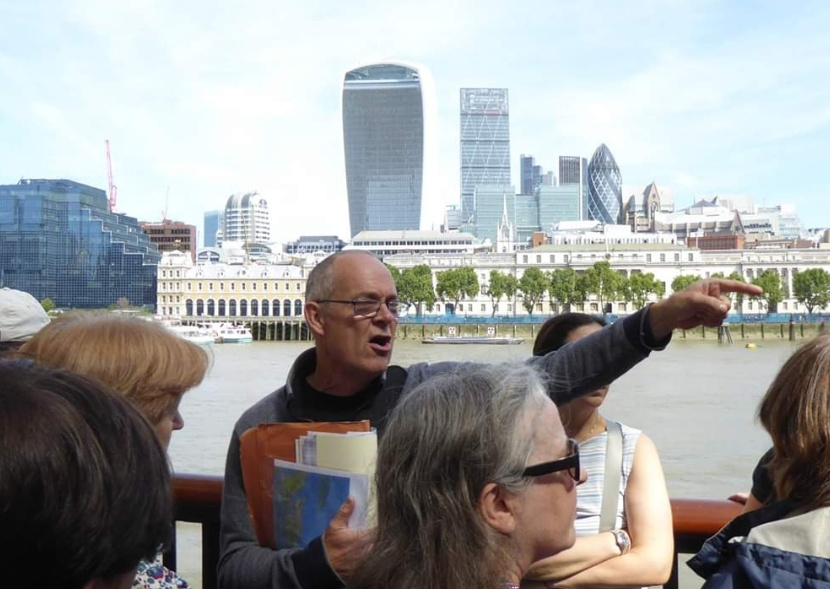
The good news is that I am starting doing real physical Guided Walks again.
Leo Heaton and I are doing an Archaeology walk every Thursday evening at 6.30. We alternate as the Guide.
The plan is to do another walk in the afternoon. I am also putting together a series of special, repertory walks for London walks running throughout the summer.
Here are the details of the walk on 27th May.
ARCHAEOLOGY OF LONDON WALK
Thursday 6.30pm Exit 3 Bank Underground Station
Short Description
A TALE OF FOUR CITIES
Description
Legend says that London was founded as New Troy. Historians believed it was founded as Londinium after the Bridge was built by the legionaries of the Emperor Claudius in AD 43. Archaeologists in the 1970s and 1980s discovered that London was refounded as Lundenwic in the 7th Century and again in the 9th Century when it was called Lundenburg.
This walk tells the epic tale of the uncovering of London’s past by Archaeologists. And provides an insight into the dramatic history of the Capital of Britannia, and how it survived revolts, fires, plagues, and reacted to the decline and fall of the Roman Empire. It became the foremost English City but with periods under Viking and Norman control.
We tell the story in the streets of the City of London, beginning in the valley of the River Walbrook by the Temple of Mithras, and visit many sites where important archaeological discoveries were made, including the Roman Forum, Amphitheatre. Bath Houses, Temples, Roman roads and the City Walls.
To book click here
THE DECLINE AND FALL OF ROMAN LONDON ARCHAEOLOGY VIRTUAL WALK
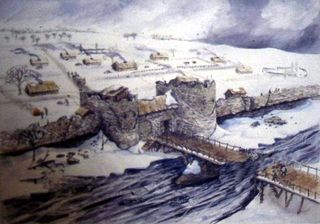
Thursday 13th May April 2021 6.30pm
An exploration of what happened at the end of the Roman Period, and how the City became first deserted, and then a Saxon, German speaking English City.
The first British Brexit? The Roman Britons kicked out the Romans in 407AD, and, soon, asked them to come back after a catastrophic collapse. Faced with plaque, civil war, invasion, mass immigration, industrial decline, reversion to barter; the authorities struggled against anarchy and descent into a Dark Age.
But was that how it was? Wasn’t it a rather a transition into the Late Antique period in which life for most people went on much as before except paying taxes to local rulers rather than distant Romans? This virtual walk explores why the Roman system in London broke down, and what really was the impact of the end of the Roman system in London?
What is the evidence? and can we trust it? Or can we really do nothing much more than guess?
We tramp the virtual streets of London in search of light to shine on the Dark Ages in London.
This is a London Walks event by Kevin Flude, ex Museum of London Archaeology and Museum Curator
To Book:
Introductory podcast (note the walk is on Thursday 6.30 13th Mary 2021)
PREHISTORIC SITES IN THE LONDON AREA
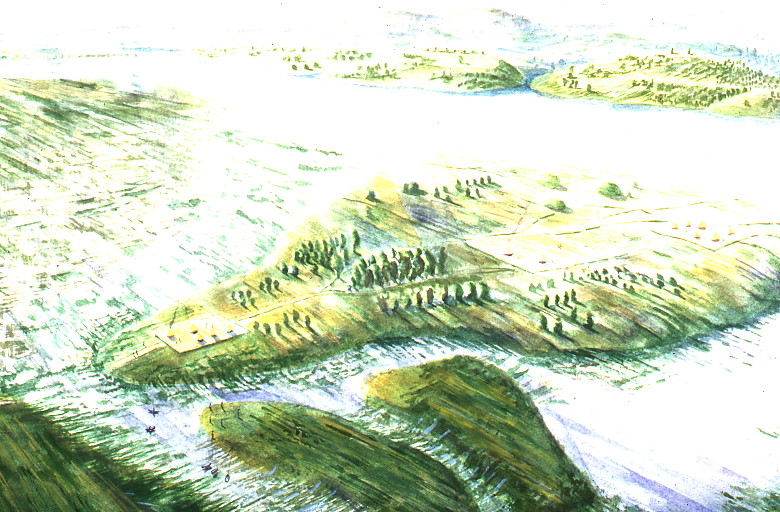
In researching my Prehistoric Virtual Walk (Sunday 25/04/21 Details) I came across many great sites of interest. Here are a few
Barn Elms – London’s Oppidum?
This is a lecture by Alex Barnes – only 15 minutes, long and about a site in South West London that just might be an important Iron Age centre of power, which might explain all that great metalwork found in the River Thames over the centuries.
The Early River Thames – the Iron Age and Before
This is a lecture by Jon Cotton in the Gresham College Series.
Gives interesting insights.
Horton Neolithic Houses
I don’t know how I missed this site, as it was reported in archaeological magazines I read, but it is an amazing multi-period site in the Thames Valley. Excavations before gravel extraction have shown a particularly amazing sequence of Neolithic and Bronze Age discoveries.
They found 4 or 5 early Neolithic Houses, about 15% of those that have been found in the entire UK, and an amazing placed deposit, which contained a collection of objects dating back thousands of years. In effect, a ‘museum’ collection.
I’ll let you read it from the horse’s mouth. To read click here.
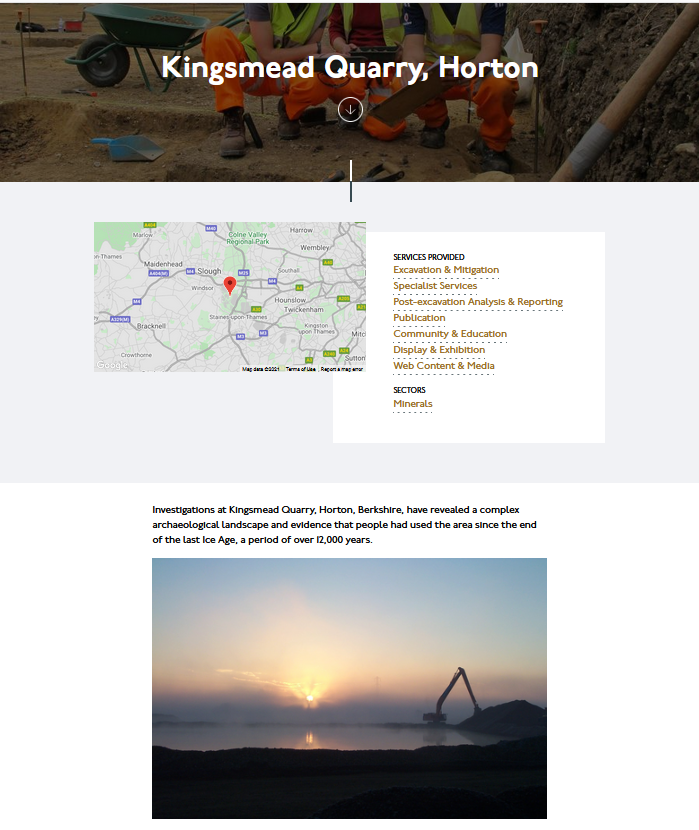
LONDON BEFORE LONDON – PREHISTORIC LONDON VIRTUAL WALK

This has been a long time coming and only made possible by the need to go Virtual during the Pandemic. I have never done a prehistoric walk around London as such. I have done sections of it, and given lectures on the subject. But they were mostly overviews. This has therefore been a challenge putting this together, but a necessary revision of my knowledge.
So please do join me on:
Sunday 25th April 2021 6.30pm
An exploration of London before the foundation of Londinium
It was long thought that London was founded by a Trojan Exile in the Late Bronze Age. But historical analysis and archaeological excavation gradually demoted the idea to a myth.
On this tour we explore what was in the London area before the Romans. We begin at Heathrow and tour Greater London for evidence from the Paleolithic to the invasion of the Emperor Claudius.
We concentrate on the period since the introduction of farming, and bring together evidence for the prehistoric Kingdoms that controlled the area on the eve of the Invasion. We look for henges, barrows, hill forts, hut circles and look at genetic evidence for identity of prehistoric Londoners. The tour will end in the City.
This is a London Walks event by Kevin Flude, ex Museum of London Archaeology and Museum Curator
VIRTUAL GUIDED WALKS COMING UP
THE REBIRTH OF SAXON LONDON ARCHAEOLOGY VIRTUAL WALK

Sunday 4th July 2021 6.30pm
An exploration of what happened following the Roman Period. How did a Celtic speaking Latin educated Roman City become, first deserted, then recovered to become the leading City in a Germanic speaking Kingdom?
To book
THE GREAT FIRE OF LONDON ANNIVERSARY VIRTUAL WALK
Virtual Zoom Walk on Sunday Sept 5th 6.30pm
On the Anniversary of the Great Fire of London we retrace the route of the fire of 1666 from Pudding Lane to Smithfield.
To book
RING IN THE EQUINOX VIRTUAL WALK
Tuesday 21st September 2021 7.30pm
On this walk we look at London at the Equinox, its calendars, folklore and events associated with the beginning of Autumn
To book
MYTHS, LEGENDS, & HALLOWEEN VIRTUAL WALK
SUNDAY 31st October 2021 6.30pm
The walk tells the story of London’s myths and legends and the celtic origins of Halloween. .
To book
ZEPPELIN NIGHTS – A VIRTUAL WALK FOR REMEMBRANCE SUNDAY
Sunday 14 November 2021 6.30pm
We follow the route of a Zeppelin Raid through London. On the way we discover London in World War 1
To book
Reconstruction of the newly discovered Thermopolium at Pompeii
posted on YouTube by Pablo Aparicio.
Salon Issue 466 from the Society of Antiquaries says:
‘Choices for dinner from this thermopolium would have included duck, goat, pig, fish, and land snails, all of which were found in the deep terracotta jars embedded in the stone counter. It appears that wine was also on offer; fava beans, which were used to modify the taste of wine, were been found in a different container.’

